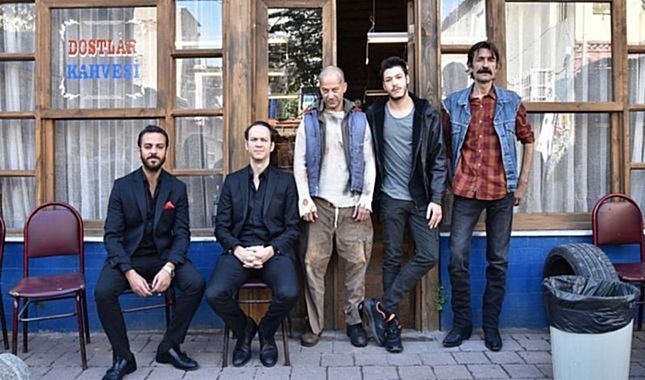
Tarihi Bir Zenginlik: Güney Kore
Kore'de yaklaşık 1000 yıl hüküm süren eski Silla Krallığı'nın başkenti Gyeongju’dan iki Kore arasında ateşkes anlaşmasının imzalandığı 27 Temmuz 1953'te oluşturulan Askerden Arındırılmış Bölge’ye (DMZ) kadar zengin tarihinden beslenen kültürel öğeleri bünyesinde barındıran ülke, adeta açık hava müzesi olarak keyifli bir tatil olanağı sağlıyor.
Yaz aylarının ardından tatil rotalarının bir süreliğine ara verilen kültür destinasyonlarına çevrilmeye başlandığı bu dönemde, Antik Çağ’a dek uzanan tarihi zenginliği ile Güney Kore, ziyaretçilerin unutamayacakları eşsiz deneyimlere ev sahipliği yapacak bir destinasyon olarak öne çıkıyor. Modern ve gelenekseli bir potada harmanlayan ülke, dünyanın neredeyse hiçbir yerinde benzeri olmayan doğal güzellikleri, lezzetli mutfağı, sanat ve eğlence hayatının yanı sıra aynı zamanda seyahat severler için çok özel bir tarihi dokuya da sahip.
Asya Kıtasının En Eski Gözlemevi Güney Kore’de
M.Ö. 57 yılında kurulan tarihi Silla Krallığı’nın başkenti Gyeongju, şehrin dört bir yanına dağılmış değerli binalar ve eserler ile ziyaretçilerin büyük Silla'nın hem yükseliş hem de çöküş dönemini yakından gözlemlemelerine imkan sağlıyor. Bölge, tarihi zenginliğinin yanı sıra hayranlık yaratan doğası ile de dikkat çekiyor.
Gyeongju denince akla ilk gelen eser şüphesiz Kore'de UNESCO Dünya Mirası listesine kaydedilen ilk tarihi tapınak olan Bulguksa Tapınağı. Bulguksa tapınağının ihtişamı, Silla Krallığı'nın altın çağının simgesi olarak kabul ediliyor. Budist kültürün temsili bir kalıntısı olan tapınak, 1995'te UNESCO tarafından Dünya Mirası olarak belirlendi. Tapınağın tarihi değeri ve mimari güzelliğiyle beraber özellikle sonbaharda büründüğü adeta tablo görünümü, ziyaretçileri huzur ve sükûnet içindeki bu mekanda mevsime hayran bırakıyor.
Seokguram Grotto da yine tarihi 8. yüzyıla uzanan bir Silla Krallığı dönemi eseri. Bulguksa Tapınağı'na 3 kilometre yürüyüş yolu mesafede olan ve Buda’ya adanmış bu mistik mağara da 1995 tarihinde UNESCO Dünya Mirası olarak tescillendi.
Gyeongju’da bulunan ve Silla Krallığı döneminde kutsal kabul edilen Namsan Dağı, yamacına dağılmış 100 tapınak alanı, 80 taş Buda heykeli ve 60 taş mabet ile çok etkileyici ve adeta gerçek bir açık hava müzesi. Silla Krallığı'nın uzun tarihinin ve görülmeye değer doğasının bir araya geldiği Namsan Dağı, Silla halkının estetik anlayışının ve dini geleneklerinin evrilerek bugünkü sanat biçimine dönüştüğü yerdir.
Daereungwon Mezar Kompleksi, hemen Gyeongju şehir merkezinde sizi bekliyor. Bu ruhani yerde gezerken göz alıcı dev tümülüs silüetlerinin adeta yemyeşil bir park gibi sizi alıp antik döneme götürmesine izin verin. Bu alanda yer alan ve Silla döneminin tipik bir üst sınıf mezarı olarak nitelendirilen Cheonmachong Mezarı, bugün içerisine girilebilen tek mezar olarak öne çıkıyor. Bugüne dek bu höyükte toplam 11.526 eser keşfedildi. Mezar, aynı zamanda Kore'nin antik bir mezardan çıkarılan ilk sanat eseri ve Silla Krallığı'ndan kalan birkaç tablodan biri olan Cheonmado’yu (Kore Uçan Atı) da barındırdığı için ayrı bir öneme sahip.
Gyeongju’nun simge yapılarından bir diğeri Cheomseongdae Gözlemevi, Asya kıtasının en eski astronomi gözlemevi olmasıyla da tarihi bir öneme sahip. Gözlemevi, yaklaşık 9 metre yüksekliğinde silindir şeklinde inşa edildi ve bir yıldaki gün sayısını simgeleyen 365 taştan oluşuyor. UNESCO Dünya Mirası listesinde yer alan Cheomseongdae Gözlemevi tarihi değerinin yanı sıra sonbaharda ışıldayan pembe pamuk şekeri çimi (muhly) de Gyeongju'nun sonbahar rengini temsil ediyor.
Barışın ve Umudun Simgesi DMZ (Askerden Arındırılmış Bölge)
Güney ve Kuzey Kore arasında ateşkes anlaşmasının imzalandığı 27 Temmuz 1953'te kurulan DMZ (Askerden Arındırılmış Bölge) tampon bölgesi, siyasi statüsü ve tarihsel yapısı açısından dünyada ilk ve tek olması ile ziyaretçilerine benzersiz bir deneyim imkanı sunuyor. Bu bölgede belirli noktalar kontrollü turlarla gezdiriliyor, büyük dürbünlerle kuzey tarafı izlenebiliyor.
Hattın hem kuzeyinde hem de güneyinde 2 kilometre genişliğinde bir araziyi kapsayan DMZ, halen resmi bir barış anlaşması imzalanmadığından 60 yılı aşkın bir süredir insanlar tarafından kullanılmıyor. Bu sebeple de vahşi yaşama bir sığınak olmuş durumda. Bölge bu özelliğiyle, tarih severlerin yanı sıra doğa severler için de cazip bir destinasyon.
Ateşkes anlaşmasının imzalanması ile beraber bu bölge dünyada benzersiz bir yer haline geldi. Bugün tam ortadan ikiye bölünmüş Panmunjom isimli bölge, şahin gözlü korumaları ve dikenli tel çitleriyle DMZ'nin belki de en ikonik görüntüsüne sahip olabilir. Panmunjom’un bir sokağı ve hatta bu sokaktaki Birleşmiş Milletler Askeri Ateşkes Komisyonu Konferans Binası bile tam ortadan ikiye bölünmüş durumda. Sınır, bu bina içindeki müzakere masasının tam ortasından geçiyor ve iki ülke yetkilileri bu masada görüşmelerini gerçekleştiriyor.
Gezginler için bir başka ilgi çekici yer ise, Kuzey Kore'ye göz atabilecekleri, ilk olarak 1987'de halka açılan Dorasan Gözlemevi. Gözlemevinin yakınında, Kuzey Kore tarafından inşa edilen ve 1978'de keşfedilen 'üçüncü yeraltı tüneli' bulunuyor. Yerin 200 fit altında olan bu sızma tünelinin uzunluğu 1,6 kilometreyi aşıyor. Yüksekliği ve genişliği 2 metre olan tünel, bir saatte 30.000 askeri harekete geçirebilecek kapasitede.
Dorasan İstasyonu, Güney Kore demiryolu hattının en kuzeydeki durağı. Birleşik bir Kore için çabanın sembolü haline gelen Dorasan İstasyonu, birçok Koreli için Güney Kore'deki son durak değil iki ülke birleşirse "Kuzey Kore'ye giden ilk istasyon". Seul’den hareketle DMZ’ye gelen DMZ treni de her biri barış, sevgi ve uyum temalarıyla tasarlanmış üç kabinden oluşuyor. Tarihin üstesinden gelmeyi ve doğayla yaşamın büyüklüğüne odaklanmayı hedefleyen DMZ treni, yolculara bölgenin eşsiz manzarasının tadına varacakları bir seyahat imkanı sunuyor.
Yine DMZ içerisinde yer alan Cheorwon Barış Gözlemevi ve DMZ Müzesi de yakın tarihe tanıklık etmek isteyen gezginlerin ziyaret etmeden dönmek istemeyecekleri bir etkileyiciliğe sahip.
Güney Kore ülkenin farklı kültürünü deneyimlemek, eşsiz tarihine ve benzersiz doğasında huzur veren atmosferine şahit olmak isteyen herkesi ağırlamayı bekliyor.
Kore kültürüne heyecan verici bir yolculuk için https://www.ktoturkey.com/ adresini ziyaret edebilirsiniz.
A Wealth of History Ranging from the Mysticism of Buddhism to the Mystery of the Demilitarized Zone: South Korea
South Korea, where historical wealth is blended with natural beauties, offers a unique travel experience to history-loving travelers in autumn.
From Gyeongju, the capital of the former Silla Kingdom, which ruled for nearly 1000 years in Korea, to the Demilitarized Zone (DMZ) created on July 27, 1953, when the armistice agreement between the two Koreas was signed, the country, almost like an open-air museum, provides a pleasant holiday opportunity which contains cultural elements nourished by its rich history.
In this period, when holiday routes are beginning to be turned into cultural destinations that were suspended for a while after the summer months, South Korea, with its historical wealth dating back to the Ancient Era, stands out as a destination that will host unique, unforgettable experiences for visitors. Blending the modern and the traditional in a pot, the country has unique natural beauties, delicious cuisine, art, and entertainment life, as well as a very special historical texture for travel lovers.
Asia's Oldest Observatory is in South Korea
Gyeongju, the capital of the historical Silla Kingdom, founded in 57 BC, allows visitors to closely observe both the rise and fall period of the great Silla, with precious buildings and artifacts scattered throughout the city. In addition to its historical wealth, the region also draws attention with its admirable nature.
When it comes to Gyeongju, the first thing that comes to mind is undoubtedly the Bulguksa Temple, the first historical temple in Korea to be recorded on the UNESCO World Heritage Site list. The magnificence of the Bulguksa temple is considered to be a symbol of the golden age of the Kingdom of Silla. The temple, a representative relic of Buddhist culture, was identified as a World Heritage Site by UNESCO in 1995. Along with the historical value and architectural beauty of the temple, its almost picturesque appearance especially in autumn, leaves the visitors in awe of the season in this peaceful and tranquil place.
Seokguram Grotto is also a Silla Kingdom period artifact dating back to the 8th century. This mystical cave dedicated to the Buddha, located 3 kilometers from the Bulguksa Temple, was also registered as a UNESCO World Heritage Site in 1995.
Namsan Mountain is a very impressive and a veritable open-air museum, with 100 temple sites, 80 stone Buddha statues, and 60 stone pagodas scattered across the mountainside. Namsan Mountain is a place where the scenic nature and long history of the Silla Kingdom coexist, and also where the aesthetic consciousness and religious traditions of the Silla people evolved into the artform it is today.
Daereungwon Tomb Complex is waiting for you right in downtown Gyeongju. As you walk through this spiritual place, let the stunning silhouettes of giant tumulus like a lush park, take you back to the ancient times. Cheonmachong Tomb, characterized as a typical upper class tomb of the Silla period, stands out as the only tomb that you can enter today. A total of 11,526 artifacts were discovered within this tomb, including Cheonmado, an artwork considered highly valuable as it is one of a few paintings from Shilla Kingdom.
Cheomseongdae Observatory, another landmark of Gyeongju, has historical importance as it is the oldest astronomical observatory in the Asian continent. The observatory was built in the form of a cylinder about 9 meters high and consists of 365 stones, symbolizing the number of days in a year. In addition to the historical value of the Cheomseongdae Observatory, which is on the UNESCO World Heritage List, the pink cotton candy grass (muhly) that glows in autumn also represents the autumn color of Gyeongju.
The Symbol of Peace and Hope, DMZ (Demilitarized Zone)
Established on July 27, 1953, when the armistice agreement between South and North Korea was signed, the DMZ (Demilitarized Zone) buffer zone offers a unique experience to its visitors as it is the first and only one in the world in terms of its political status and historical structure. Certain points in this region are toured with controlled tours, and the north side can be viewed with large binoculars.
The DMZ, which covers a 2-kilometer-wide area both north and south of the line, has not been used by people for more than 60 years, as no formal peace deal has yet been signed. For this reason, it has become a shelter for wildlife. This feature makes the region an attractive destination for nature lovers as well as for history lovers.
With the signing of the armistice agreement the place has become a unique region in the world. Panmunjom, cut in half today, might be the most iconic sight of the DMZ, with its hawk-eyed guards and barbed wire fences. One street of Panmunjom and even the United Nations Military Armistice Commission Conference Building on this street are split in half right in the middle. The border passes right in the middle of the negotiation table in this building, and the officials of the two countries hold their meetings at this table.
Another place of interest for travelers is the Dorasan Observatory, which first opened to the public in 1987, where they can take a glance at North Korea. Near the observatory is the 'third underground tunnel' built by North Korea and discovered in 1978. The length of this seepage tunnel, which is 200 feet below the ground, exceeds 1.6 kilometers. The tunnel, which is 2 meters high and wide, has the capacity to mobilize 30,000 soldiers in an hour.
Dorasan Station is the northernmost stop of the South Korean railway line. Dorasan Station, which has become a symbol of the effort for a unified Korea, is not the last stop in South Korea for many Koreans, but the "first station to go to North Korea" if the two countries are united. The DMZ train, which departs from Seoul and arrives at the DMZ, consists of three cabins, each designed with the themes of peace, love, and harmony. Aiming to overcome history and focus on the greatness of life with nature, the DMZ train offers passengers a journey where they can enjoy the unique scenery of the region.
Also located in the DMZ, the Cheorwon Peace Observatory and the DMZ Museum have an impressiveness that travelers who want to witness recent history would not want to return without visiting.
South Korea is waiting to welcome everyone who wants to experience the country's different culture and witnesses its unique history and uniquely peaceful atmosphere.
You can visit https://www.ktoturkey.com/ for an exciting journey into Korean culture.
Yorum Yaz
Yorumunuz alındı!
Yorumunuz başarıyla kaydedilmiştir ve onaylandıktan sonra yayına alınacaktır.


